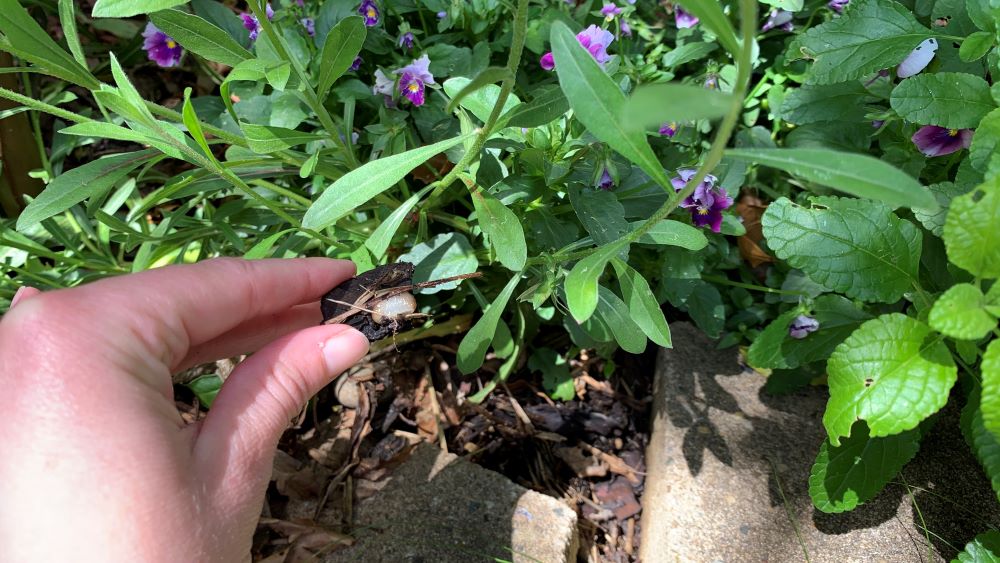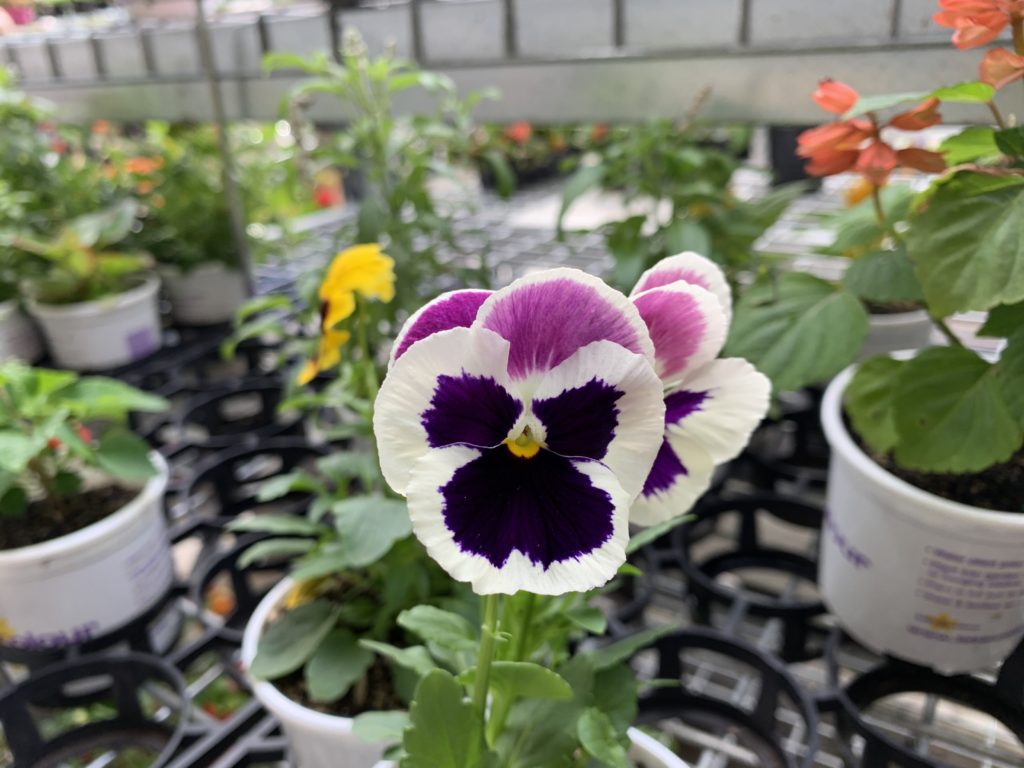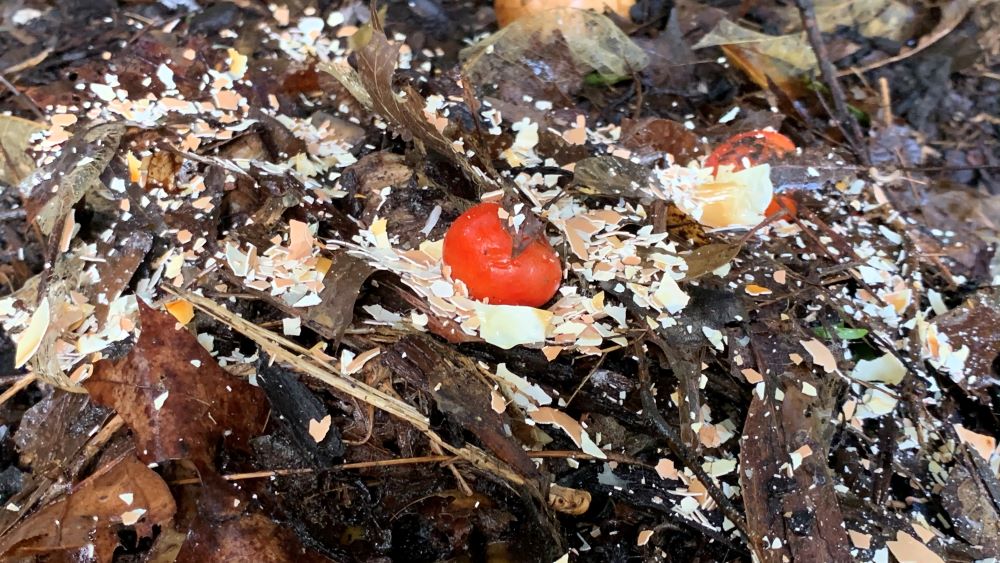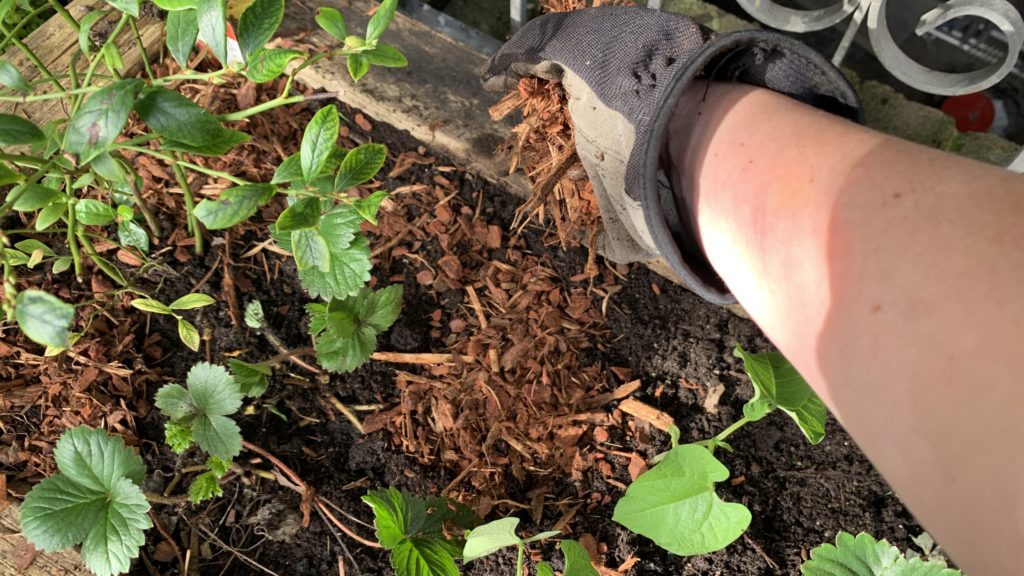Slugs will eat the leaves of flowering plants including marigolds, pansies and violas. Slugs will also the leaves of fruit trees but are more likely to attack fruit shrubs closer to the ground. Slugs will eat green leaves of brassicas like broccoli and cauliflowers, herbs, green leafy vegetables like spinach and lettuce and new seedlings.
Slugs live in the mulch or organic matter near the top of the soil and will break it down slowly over time. When new growth or delicious leaves are easily accessible, they will eat them too.

Slugs come out during the night to feed on rotting plant matter and fresh leaves. Young leaves and plants close to the ground are more likely to be eaten by slugs.
This article will explore what plant leaves slugs love to eat and how to stop them naturally at home.
Slugs eat the leaves of flowering plants
Slugs will eat the leaves of flowering plants that are close to the ground. They will eat flowering annuals such as marigolds and pansies as well as perennials such as salvia or daisies. The healthier and stronger the plant is, the less likely that they will be eaten by slugs.

How to protect annual flower seedlings from slugs
Small seedlings like violas or pansies can be eaten overnight in spring or fall when you plant them out. I have lost entire pansy plants overnight due to slug attack in spring. There are a few ways that you can protect new seedlings and flowering annuals from slugs.
1. Wait until seedlings are larger

One great way to protect annual seedlings is to wait until they are slightly larger before you plant them out. Small seedlings that are 1-2 inches are great value but can be quickly consumed by passing slugs. I like to buy more mature seedlings that are at least 3 inches if I can.
Pinch off any flower heads that are coming out so that the plant can focus its energy on establishing roots and leaves. This will make it stronger in the long run and more resistant to bug attack.
You can plant seedlings out into small pots and keep them in a greenhouse until they have reached the desired side. That way you will have a healthy plant that can outgrow any slug bites overnight.
2. Raise the garden higher

Raised, no-dig and lasagna garden beds are perfect for protecting young seedlings. These beds can be anywhere from a few inches to a few feet off the ground. Slugs are ground-dwelling animals so it will take them longer to climb up and find your new seedlings.
By the time slugs climb up a raised garden bed or no-dig garden, the seedlings will be established and more resistant to attack.
3. Surround delicate plants with coffee grounds
Coffee grounds are a safe and simple way to protect annual seedlings from slug attack. Sprinkle coffee grounds around the seedling to create a barrier between the slugs and the plant. Slugs hate crawling through coffee so will avoid it altogether.
4. Crushed egg shells

Crushed egg shells make a great barrier between new flowering seedlings and slugs. Slugs don’t like to crawl across the sharp edges of egg shells so they will avoid them if they can. Sprinkle a thin layer of egg shells around the seedling to stop slugs from attacking.
5. Sharp gravel or mulch
Mulch is a great way to stop slugs from reaching your plants. Sharp bark mulch or gravel will deter slugs as they want to avoid crawling over the sharp edges.
Slugs eat the leaves of fruit trees and shrubs
Slugs will attack fruit trees or bushes that are close to the ground. Slugs will nibble on strawberry and blueberry leaves if they are able to reach them. They will eat the fruit too if they get a chance, especially if strawberries are touching the ground.
How to stop slug from eating fruit leaves
Here are a few tips to stop slugs from eating fruit leaves that are close to the ground. Blueberries and strawberries are commonly attacked by slugs because they are close to or touching the ground.
1. Raise berry bushes off the ground

Grow strawberry and blueberry bushes in raised garden beds to keep them out of reach of slugs. The strawberries can hang over the edge of the bed and keep them away from slugs. Raise the strawberry crowns slightly when you plant them and trim any leaves that are old and touching the ground.
2. Plant strawberries in a hanging pot
Strawberry leaves can be kept out of the way of slugs in hanging baskets. Slugs are ground dwellers so will not find their way up to a hanging basket suspended from your pergola or balcony. Strawberries grown in hanging baskets make a great feature and it makes the strawberries very easy to pick.
3. Plant in raised rows
If you want to plant strawberries in the ground, mound the rows slightly so the plant is higher than ground level. This will also help to avoid the crown rotting but keeps them out of the slugs’ way. Layer straw mulch around the strawberries to keep them off the soil and trim off any old or rotting berries.
Slugs eat vegetable leaves

Slugs will feast on leafy green vegetables including spinach, silverbeet, lettuce, radish and beetroot leaves. Soft green leaves are easy for them to crawl up and devour and they can make short work of small plants.
I have found that interplanting leafy greens with other vegetables and flowers makes them less likely to be attacked by slugs. I plant peas, tomatoes and herbs in my raised beds with leafy greens which helps to reduce the concentration of slugs in one area.

Slugs are actually fantastic additions to your garden when they are not feasting on your plants. Put them in your compost heap and they will help to break down the organic matter faster. I like to let the lizards and birds take care of the extra slugs in my garden to keep their numbers under control.
Do Slugs Eat Leaves? | Summary
Slugs will eat fresh leaves on young or established plants if they can crawl up them. Planting in raised garden beds or pots is a great way to keep the leaves out of the slugs reach and to save your plants. Natural deterrents like coffee grounds and egg shells work well but interplanting is the best defense to stop the slugs from attacking all of your crop.
Happy growing.
I am an accredited practicing dietitian, experienced gardener and a dedicated cook. I love writing and sharing my experience so you can learn from my successes and mistakes.
